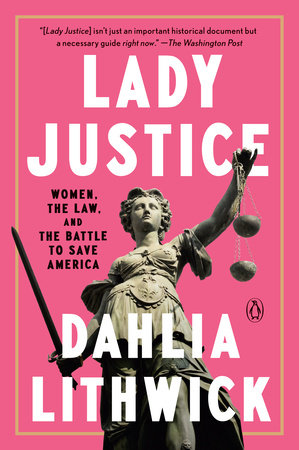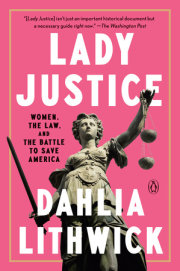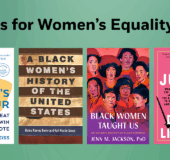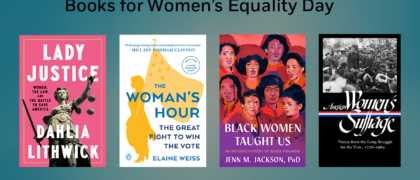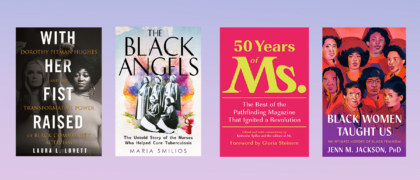INTRODUCTION
Freedom is a dream
Haunting as amber wine
Or worlds remembered out of time.
Not Eden’s gate, but freedom
Lures us down a trail of skulls
Where men forever crush the dreamers—
Never the dream.
—PAULI MURRAY, “Dark Testament”
I’m not sure if my involvement in causes, benefits, marches, and demonstrations has made a huge difference, but I know one thing: that involvement has connected me with the good people: people with the live hearts, the live eyes, the live heads.
— pete seeger
I sometimes think of the Supreme Court oral arguments in
Whole Woman’s Health v. Hellerstedt on March 2, 2016, as the last truly great day for women and the legal system in America. There are, to be sure, many such glorious moments to choose from, both before and after Trump, but as a professional court-watcher, I had a front-row seat to this story, one that offered a sense that women in the United States had achieved some milestone that would never be reversed. The landmark abortion challenge represented the first time in American history that a historic abortion case was being heard by a Supreme Court with three female justices. Twenty-four years earlier, when the next momentous abortion case—
Planned Parenthood v. Casey—had come before the Supreme Court, only one woman, Sandra Day O’Connor, sat on the bench. Go back a bit further and
Roe v. Wade, the pathbreaking 1973 case that created a constitutional right to terminate a pregnancy, was argued before and decided by nine men and zero women. And when
Griswold v. Connecticut, the lawsuit protecting the rights of married couples to buy and use birth control, was argued at the high court back in 1965, that bench comprised nine males so uneasy with the topic of contraception that at oral arguments nobody was brave enough even to name the birth control device being litigated. (As a result, the entire transcript from
Griswold, argued fifty-one years before
Whole Woman’s Health, reads like an Abbott and Costello “Who’s on First” sketch.) From that long-ago argument one may easily derive a general constitutional precept that nobody—not even well-meaning progressive male jurists and legislators—should be in the business of regulating birth control devices they are too freaked out to name.
Buried in that story is the truth about how legal decisions involving women, their salaries, their bodies, their educations, custody of their children, and their votes have been framed in American courtrooms until very recently: by husbands and fathers with good intentions and staggeringly low information. We lucked out. We got contraception and access to military schools, the right to our own credit cards, and all sorts of equal rights over the years. But it all felt different in 2016. Women now made up 50 percent of the law school population; they were partners at law firms, members of Congress, judges, professors, and three of them sat, with lifetime tenure, on the highest court in the land. Generations of women who had played by the rules, and changed American institutions and government, were poised to be a part of a genuinely equal polity. Sure, there were hiccups and setbacks. Al- though half of America’s law students and lawyers were women, women made up only one-third of attorneys in private practice, 21 percent of equity partners, and 12 percent of managing partners, chairs, or CEOs of law firms. Hmm. Weird. Less than 5 percent of CEOs of Fortune 500 companies were women. And women made up only about 24 percent of Congress, 18 percent of governors, 29 percent of state legislators. So, okay, it wasn’t perfect. But it was progressing. Equal pay was around the corner, better child-care and leave policies were barreling toward us, and as arguments progressed in
Whole Woman’s Health, it seemed distinctly possible that the last days of men telling women what to do with their freedom and their life choices and their family decisions, were dawning.
On that bright, freezing March morning, Ruth Bader Ginsburg, Sonia Sotomayor, and Elena Kagan tag-teamed their interrogation of Scott Keller—Texas’s solicitor general—as he stutter-stepped through his justification of why, back in 2013, Texas had passed new requirements on clinics and physicians that would effectively close most abortion facilities and prevent women from terminating their pregnancies. These were onerous regulations. In rural areas, with clinics shuttered, women were forced to drive for days to access care. Whole swaths of Texas had no accessible clinics remaining at all. Poor women and women of color were hardest hit by the lack of facilities. They had to seek days off from work, sleep in their cars, return for repeat appointments. State lawmakers had argued that their sole interest in the new clinic laws was in protecting women’s health, but women’s well-being had declined catastrophically, and in court proceedings Texas could provide no evidence that improving health outcomes was the real reason for the regulations. Pressed on this question at oral argument, Solicitor General Keller could barely finish a sentence.
As the three women justices—deftly aided by Justice Stephen Breyer, the court’s fourth feminist—took turns snacking on Texas’s beleaguered lawyer, I witnessed for the first time in my sixteen-year career as a journalist something amazing: the rules of the Supreme Court road had shifted overnight. Court argument sessions are tightly controlled, highly formalized enterprises that haven’t really changed much over two centuries, with the exception of COVID-era telephonic sessions. The nine justices sit at the same high bench next to the same spittoons (spittoons!), sipping from the same tall, silver milkshake cups they have been using for decades as lawyers make their formal arguments. But on that morning in 2016, the three women justices ignored the formal time limits, talking exuberantly over their flummoxed male colleagues. Justice Ruth Bader Ginsburg at one point essentially instructed the chief justice to add extra time to the clock for a female reproductive freedom advocate. And he complied. I described that day of three female justices and Justice Breyer going to town on counsel as a “four-car train of whoop ass.” Not the usual controlled analysis from the staid justices. But what was exceptional and—at least in retrospect—heartbreaking that morning was that it afforded America a glimpse of what genuine gender parity or near parity might have meant for future women in powerful American
legal institutions. It felt like the end of constitutionally sanctioned mansplaining. It felt, in a way, like the end of history.
That morning felt like nothing so much as an explosion of bottled-up judicial girl power that had been two centuries in the making. The 5–3 ruling that came down almost four months later upheld a woman’s fundamental right to choose to end her pregnancy. That majority opinion, penned by Justice Breyer, asked courts and lawyers to puncture centuries of accumulated lies and stereotypes about fragile, confused women making bad choices in order to consider instead the actual ways in which women live their economic and moral lives. It was a constitutional breakthrough, written by a man who saw women as agents in full. At that moment, the country appeared inches away from leveraging the law to serve women’s dignity and equality interests on a massive scale. Back in that spring of 2016, we really thought we could see gender equality from our back porches. And then it was gone. With the death of Justice Ginsburg in September 2020; the seating of three committed antichoice justices by Donald Trump in the years since
Whole Woman’s Health; and the reversal of Roe in June of 2022, that case will now likely stand as a high-water mark we may not soon see again in the courts, or in women’s constitutional prog- ress. It has become, at least for me, a marker of the end of history, but in completely the wrong direction. In a matter of weeks after
Whole Woman’s Health came down, constitutional history began to unravel quickly.
Every woman I know remembers what that summer before the 2016 election felt like. The GOP candidate for president who referenced Mexicans as rapists in launching his campaign. Four short months after
Whole Woman’s Health came down, we would all hear with our own ears the audio from Access Hollywood of the US Republican nominee for president boasting on camera that because he was “a star,” he could “grab [women] by the pussy” without consequences. By Novem- ber of 2016, we learned that the only consequence for such an admission would be a promotion to the Oval Office.
Every woman I know remembers precisely where she was when the 2016 election was called for Donald Trump. I was covering polling places in North Carolina that day, and it was dawning on me that the number of affronted women showing up in pantsuits to pull the lever for Hillary Clinton was underwhelming. Like so many of the women in this book, I spent election night comforting distraught kids and pounding bourbon. What had happened? How did it happen? Millions of people—millions of women—had voted for a man who had proven a thousand times over throughout the campaign that he thought women were best seen as the creamy offerings on a dessert cart. If we spoke up, pushed back, we were pigs, we were dogs, we were bleeding from the whatever. On the campaign trail, Trump expressly floated the idea of punishing women for terminating their pregnancies. How did we get here and how did it happen so quickly? Who, so many of us wondered, had voted for this man?
Yes, there was dancing in the streets in some quarters, but there were also hushed, horrified whispers over the phone all night. The day after the election I found myself on a dais, in a ballroom at a fancy hotel in Washington, DC, at a woefully poorly timed luncheon event celebrating women oral advocates at the Supreme Court. The tables were laid with white linen and sparkling crystal, and some of the young women lawyers, law clerks, and law students in the crowd sobbed openly. So did some of the speakers on the dais. So did
this speaker on the dais. How could this event be happening? Hadn’t history just ended? (Over the course of the next four years, as I covered the Mueller report and Michael Flynn and emoluments clause violations and Hatch Act violations and the slow implosion of the Justice Department, I met every Super Bowl, every Thanksgiving dinner, and every Presidents’ Day White Sale with the same exact confusion: How could this event still be happening? Hadn’t history just ended?)
But just as it seemed that women’s progress was unraveling like a cheap sweater, something was rising up in its place. In response to what was happening at the top, extraordinary women were doing exceptional things everywhere else. There was the Women’s March; there were armies of women phone banking; women’s groups were teaching themselves about chattel slavery and systemic racism, about voting rights, about gender and power; women were creating circles, squares, and tetrahedrons of new kinds of activism. And in the midst of that, almost as if by unspoken mutual agreement, women lawyers were turning on a dime, upending their lives and their careers and their families to organize a new kind of resistance movement that would play out in courthouses, in statehouses, and in elections.
In the days and weeks before Donald Trump was inaugurated in January 2017, Sally Quillian Yates, the acting attorney general of the United States and highest-ranking official at the US Department of Justice (DOJ), had agreed to stay on as interim head of the DOJ. Yates was born and raised in Georgia in a family of lawyers. After almost three decades of public service as a prosecutor, she was well aware that she would be replaced by the new president at the first opportunity, because attorneys general serve at the pleasure of the president. But she had no idea she would immediately be fired for refusing to sign off on a travel ban she deemed rooted in religious intolerance. Yates had no notion she would be the first casualty in Donald Trump’s war on the Constitution.
In New York City, at almost the same time, Becca Heller was a young lawyer who had co-founded the International Refugee Assistance Project (IRAP), an organization that had been working to help refugees fleeing intolerable conditions a road to find lawyers to assist them with their asylum efforts in the United States. Humanitarian crises in Syria and around the world were already creating formidable challenges for the group. But Heller had no idea that she would, within mere days of Trump’s inauguration, find herself on the front lines of what would become one of the biggest spontaneous public protests of the year—an uprising of citizens and lawyers swarming the nation’s airports after Trump summarily banned immigration and refugees from Muslim-majority nations.
In New York City, Roberta Kaplan, a successful commercial litigator at Paul, Weiss, Rifkind, Wharton & Garrison, the tony white-shoe law firm, had no idea she’d soon be leaving her job to start a brand-new, woman-run litigation shop that would do large-scale pro bono social justice work. Kaplan, the winning lawyer in the pathbreaking 2013 marriage equality case,
United States v. Windsor, had devoted twenty-five years to a big-city law practice. Little did she know when she marched in the first Women’s March in January 2017, that within months she’d be in federal court in Virginia, suing Nazis who’d violently invaded Charlottesville and defending female whistleblowers in a series of #MeToo lawsuits. (Kaplan would later resign from Time’s Up over a conflict about work she did for Governor Andrew Cuomo.) Kaplan would also come to represent E. Jean Carroll, a woman who alleged the president had raped her, and Mary Trump, the president’s niece, who alleged that he and his siblings cheated her out of her inheritance.
In New York, Brigitte Amiri had planned to do big, impactful reproductive justice work for the ACLU after Hillary Clinton secured the presidency. She was looking forward to teaming up with the new administration to advance and secure women’s contraceptive and abortion rights. She never expected to be thrust into the limelight when the Trump administration began to bar pregnant teen migrants from terminating their pregnancies. Vanita Gup a, formerly the head of the Justice Department’s Civil Rights Division, was named president and chief executive of the Leadership Conference on Civil and Human Rights and found herself fighting against police brutality and immigration reforms and fighting to protect voting rights. Gupta had always thought of herself as a civil rights lawyer, not an organizer, but she would help helm several of the most important movements of the period—from marches protesting family separation policies to demands for social media reforms to voting rights. Women in Washington, DC, became the beating heart of an effort to eradicate sexual abuse and harassment in the judiciary, and, later, to oppose the nom- ination of accused sexual abuser Brett Kavanaugh to the Supreme Court. Anita Hill, who had leveled similar claims about Clarence Thomas decades earlier, would once again become the face and the voice of the urgent need to eradicate sexual predation in the workplace.
Stacey Abrams, who ran for and lost Georgia’s governorship in a 2018 election marred by allegations of rampant voter suppression, re- constituted herself as a national voting rights juggernaut and modeled for millions of women, Black, Latino, and poor voters what it would take to organize, knock doors, and get out the vote in a presidential election year beset by a pandemic and vote suppression. In Texas, Nina Perales would spend years litigating against a different form of vote suppression, the race-based redistricting seeking to outrun demographic changes in America through gerrymandering and malapportionment. All of these names represent a fraction of the women on the front lines of the lawsuits, injunctions, organizing efforts, advocacy, and lobbying work seeking to fend off every conceivable assault on the environment, health care, unions, family separations, and more.
What exploded into existence in the days and weeks after Hillary Clinton lost the 2016 election was a small army of female lawyers with, perhaps not coincidentally, backgro
unds similar to that of their preferred candidate. Like Clinton, they were women; like Clinton, they possessed law degrees; and like Clinton, they were simply unwilling to drift backward to a time when men made policy and women made dinner. Almost overnight that meant that armies of female lawyers and advocates—seemingly born for this precise moment—were galvanized and awakened before the Trump inauguration, and only deepened their engagement with the legal system in the weeks and months and years that followed. These women became equity partners in America’s sprawling, pop-up resistance law firm, each seeking to preserve freedoms that were under daily assault for the four years in which Donald Trump assured us all that he himself was above the law, and also that the law could be bent to harm those who thwarted him. More than anything, this soaring women’s legal resistance revealed, at least to me, that while we have all been waiting around despondently for Ruth Bader Ginsburg’s next iteration to rescue us, the RBG 2.0s have been among us all along.
Two short years after Donald Trump left office, we face new head- winds that threaten to leave American women vulnerable in ways we could barely have imagined when
Whole Woman’s Health was argued. The Supreme Court is expanding gun rights, dismantling the power of agencies to protect the environment, and opening the door to state efforts to criminalize abortion, miscarriage, and contraception. The high court is also participating in efforts to stymie the vote. But women are not without legal and constitutional resources to fight back. Female lawyers know this fight intimately; they’ve been doing this work for decades. This is their playbook. This is the task ahead.
Copyright © 2022 by Dahlia Lithwick. All rights reserved. No part of this excerpt may be reproduced or reprinted without permission in writing from the publisher.

